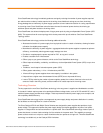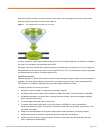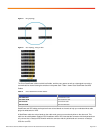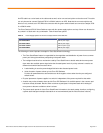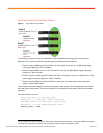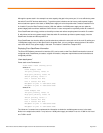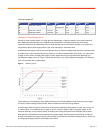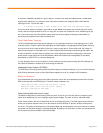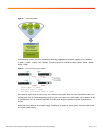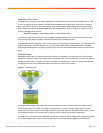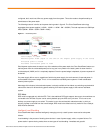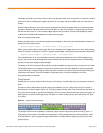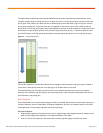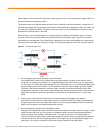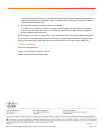
© 2012 Cisco and/or its affiliates. All rights reserved. This document is Cisco Public Information. Page 13 of 17
configured, but it would not offline any power supply from the system. This action needs to be performed by an
administrator of the power stack.
The following scenario is similar to the power-sharing mode in figure 9. The Cisco StackPower technology
aggregates three power supplies (1100W + 1100W + 1100W + 0W = 3300W). The load requirement is 500W per
switch (500W + 500W + 500W + 500W = 2000).
Figure 11. Redundant power
Power budget is 3300W
Reserved power 1100W (equal to the size of the largest power supply in the stack)
Allocated power is 2000W
Available unallocated power is 200W
Should power requirements increase in any of the switches of the power stack, the Cisco StackPower feature can
redirect power from the unallocated power pool to any port in any switch in the stack; power is drawn from the
unallocated pool (200W) until it is completely depleted. Once the power budget is depleted, all power requests will
be denied.
If a power supply failure occurs, regardless of which size power supply, the entire amount of reserved power is
now available to the power budget. This is 1+N vs. traditional redundant power systems 1:N with a dedicated
external power system.
Advantage of this feature is that redundant power is already available online without any switching required which
reduces the chance for failures during power switching from internal power supply to the external redundant
system.
RPS Mode
RPS mode is supported only with the XPS. This is the traditional RPS-style support, where up to nine switches are
connected to the XPS but only two can be actively backed up by the XPS at any one time. This is one-to-one
backup: one power supply to one switch. This mode is not to be confused with redundant mode, in which an
amount of power is reserved from the overall budget. RPS mode is the default and only mode for Cisco Catalyst
3560-X Series Switches.
Intelligent Load Shedding
Cisco StackPower feature enables intelligently managing not only a stack’s power resources but also power
failures.
Load shedding is the process of shutting down devices in case of power supply, cable, or system failures. For
power stacks in power-sharing mode, there are two types of load-shedding: immediate and graceful.



